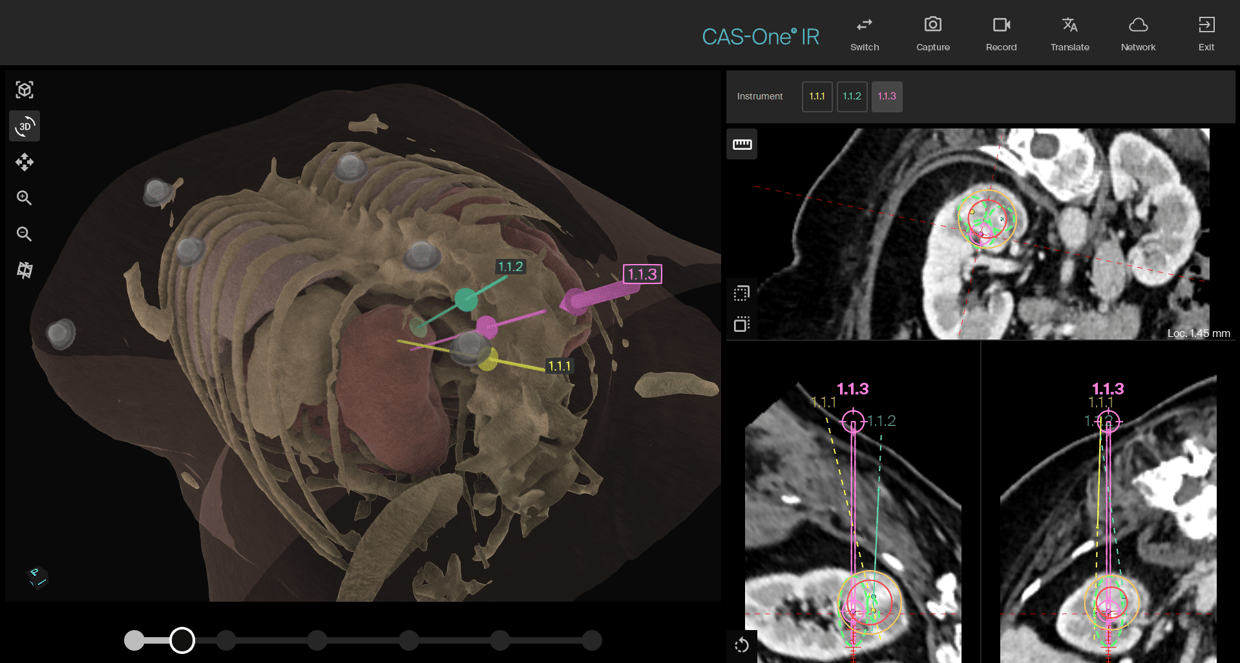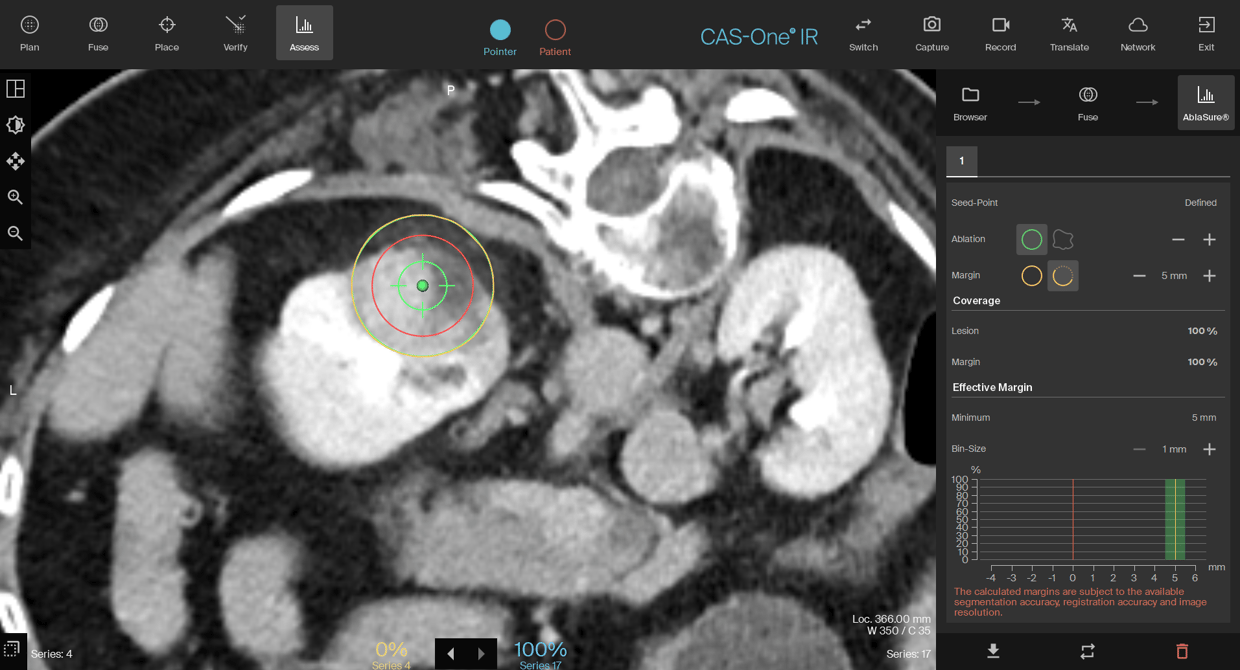Renal cell carcinoma treated with Cryoablation
Female patient with a history of breast cancer had a 39mm renal cell carcioma. Due to ongoing chemotherapy, cryoablation with the assistance of CAS-One IR was decided as opposed to a partial nephrectomy. Three cryoablation probes were planned, simulated and navigated to successfully cover and ablate the lesion. No complications were observed and the patient awaits a 3-month follow-up.
3D reconstruction with the 3 planned trajectories
 Planning scan with three cryoablation needles planned to cover tumor and margins
Planning scan with three cryoablation needles planned to cover tumor and margins

3D reconstruction of the planned needles
 Needle verification scan showing accurate (<2mm) needle placement for all 3 needles
Needle verification scan showing accurate (<2mm) needle placement for all 3 needles

AblaSure demonstrates clear and effective visualization of the ablation margins post-treatment
Name: Dr. Gerhard Gruber
Institution: Barmherzige Brüder, Vienna
Patient age and sex: Female, 68y
Initial condition:
- Patient initially diagnosed with breast cancer in December 2023
- A CT scan discovered a renal cell carcinoma T1a of 39mm
- Different approaches to treat the kidney lesion was discussed at the MDT meeting
- Due to her breast neoplasia currently being treated with chemotherapy, cryoablation was preferred over a partial nephrectomy
Treatment:
- Procedure was performed under general anesthesia
- The lesion was visible on CT and a three needle cryoablation treatment was planned and simulated to cover the tumor
- Cryoablation was performed with three IceRod probes (Boston Scientific)
- Due to the patients anatomy finding a safe trajectory was challenging, but with the help of MPR view and 3D models a safe trajectory was planned and executed
- All three needles were placed with a accuracy of less than 3mm lateral error
Result:
- The lesion was successfully treated and iceballs were evaluated on post-ablation scans
- The patient stayed as an in-patient after the procedure, upon own request, although no complications occurred
- A 3-month follow up CT and renal function tests are planned
Learn more about the stereotactic navigation system CAS-One IR.


